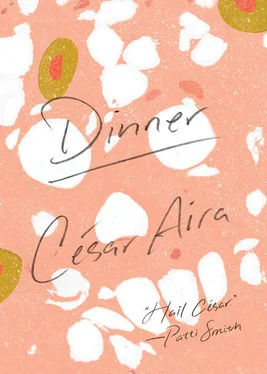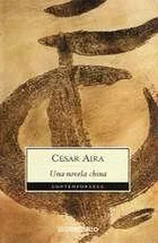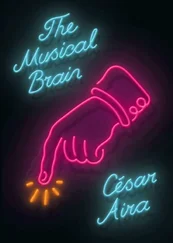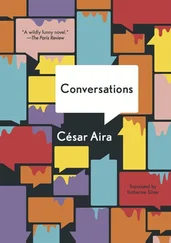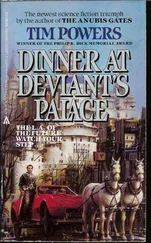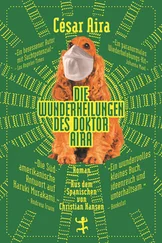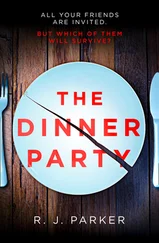In my family, we always drove to the Cemetery, except once when we walked, like poor people do. It must have been a Sunday my father was away. In general, Pringlesians don’t walk very much, they drive everywhere, that’s why that half mile seemed so long. For about half the way, there were eucalyptus trees lining the paved road, but the final stretch passed through open country, past empty fields. I always thought I’d planted one of those eucalyptus trees, but this could have been a false memory; I know that it’s a vague, confused one. One year, shortly after I’d started school, the students celebrated Arbor Day by planting trees, and they took us to the Cemetery road. As the top student in my class, I got to plant one, and I assume they placed me, maybe with a couple of classmates, in front of a hole that had already been dug, and I stuck in the little tree… It’s all blurry, but there’s one detail that is very clear, so clear that I wonder if it was the only thing that really happened and that I invented the rest to fill out the story. They made us learn a poem by heart to recite during the event. The poem was in a book, and I remember a two-line passage from that poem perfectly (more than remember, I can see it, see how high it was on the page):
I plant a seed
in this lil’ole*
There was a little “superscript” asterisk on the last word, which referred to a footnote at the bottom of the page where there was another asterisk and the words: “little hole.” Because of the meter, and maybe to make it more natural for a child to recite, the author had written the words as they were pronounced colloquially. But because it was a school book and the correct form had to be indicated, they used a footnote. In any case, trees aren’t planted from seeds but rather as “saplings,” or whatever they’re called. Fifty years later, the eucalyptus trees on the road to the Cemetery were enormous and old, and I would never know which, if any, was “mine.”
To return to my friend and the picturesque events of his life: the story of Mr. Phophsene had its equivalent in a display case. It was a tiny automaton, a wall with peeling paint on top of which sat an egg with legs (crossed), little arms, a face (it was all face), and a feathered hat. Its owner wound it up and set it in motion. The drama was enacted to the rhythm of incoherent music: the egg rocked violently then fell, slipping along a rail hidden in the wall: it fell on its head, or rather on its hat, because it was all head, and when it touched the ground, it “broke” into several pieces; it didn’t really break but rather opened, simulating breakage, along zigzagging lines that had been invisible until that moment. At that point discordant notes played, notes of doom. With the last turn of the cog, the egg closed up, a spring made it jump back up onto the wall, and there it sat where it had begun. As opposed to the previous toy, this one acted out the well-known story of Humpty Dumpty. The original had been made by Fabergé for the children of the Czar. My friend’s was a tin replica made in Argentina around 1950 to promote a children’s magazine supposedly run by a very nice journalist egg, our national version of Humpty Dumpty, who was called Pepín Cascarón. The toy’s use as publicity was spelled out in the verses written on the open pages of the miniature tin magazine leaning against the bottom of the wall:
Pepín Cascarón sat on a wall.
Pepín Cascarón had a great fall.
All the kings horses, and all the king’s men,
couldn’t put Pepín Cascarón together again.
Along came an Argentine with special skill,
and fixed up that egg out of simple goodwill.
Pepín again whole, gives girls and boys
this wonderful magazine for all to enjoy.
On the page facing the poem was an illustration that showed Pepín Cascarón at the moment he falls.
I noticed that my mother, who appreciated this toy even less than the previous one, was impatient to leave, so I pointed to the gallery door that led into the living room, and we turned in that direction. But my friend guided us through the living room toward the large dark dining room (we’d eaten in a more intimate one, at the other end of the house) and turned on a lamp in the corner, shaped like a large duck and made of translucent white plastic; its glow, very dim, did not manage to penetrate the cavernous depths of the room, but there was enough light to see that this dining room was never used. It was much too full of furniture and objects. The wood paneling was dark, and it was lined, all the way around the perimeter, with display cabinets, coat stands, bookcases, paintings, statues. A large sideboard occupied most of the lateral wall; we saw ourselves reflected in its mirror as small figures lost among the furniture. We had to walk all the way around the table, which was very large and piled high with boxes and antique optical instruments and machines. Hanging from the walls, high up, were puppets on strings. The dining room was huge, and the numerous objects filling it were very small. The collections my friend had amassed throughout his life tended naturally toward the miniature, even though there were almost no miniatures per se. Toys, automatons, dolls, puppets, dioramas, puzzles, kaleidoscopes: everything tended toward reproduction, and the reproduction tended toward a diminution of scale. However, at that stage of the evening, there was a turn toward gigantism. With a complicit smile, my friend opened a small door and invited me to take a look inside. What I saw looked more like an illustration from a children’s book than anything else I’d seen so far. This door opened onto a tiny room, surely meant to service the dining room; it was entirely filled with one doll, which barely fit (the first thing I wondered was how they’d managed to get it in there). It was enormous; standing, it must have been thirteen-feet tall. It was sitting on the ground with its head touching the ceiling, leaning against the wall, its legs bent, and its knees touching the opposite wall. It looked like a seven-year-old blond girl wearing an enormous chiffon dress with red tulle, her eyes wide open in her large head. My mother peaked in between us and then immediately withdrew, her face expressing disgust bordering on terror. Just moments before, I’d followed her gaze, which kept returning, uneasily, to an atlas on the table. It was a Larousse atlas from the nineteenth century. I thought that finally she’d found something that would interest her; she was keen on maps and atlases, and she had more than one at home to consult when she did crossword puzzles. I leaned over the table and opened it in the middle, with considerable difficulty. But she refused to look at it up close; on the contrary, she turned away, mumbling: “But why is it so big?” It really was; it must have been more than three-feet high and two-and-a-half-feet wide, and since the paper the maps were printed on was so thin, it was quite awkward to turn the pages. I felt a current of frightened bewilderment emanating from my mother, and in a way I understood her, and even shared it. The atlas’s inordinate size was a little scary. My friend, busy looking for something, hadn’t seen or heard our brief exchange when his search led him to the small door, he remembered the gigantic doll that he wanted to show us, opened the door, and called us over.
Afterwards, he resumed his search until he found a digital camera that he wanted to use to take some pictures so we’d have souvenirs of the evening. For Mother, it was just one more torture, but she must have thought, now definitely confused, that it was a procedure we were obliged to undergo in order to be able to leave. It lasted a while because my friend, who hadn’t mastered the use of the camera, took the shots over and over, wanting to try different focuses. As he got more and more excited, he wanted us to try on some masks, of which he had an endless supply. His childish side came out with every flash of the camera. The climax came when he took out a rubber elephant mask that fit over the entire head like a space suit; it was almost the size of a real elephant’s head, and amazingly realistic. He put it on, then I put it on, and many photos were taken.
Читать дальше
